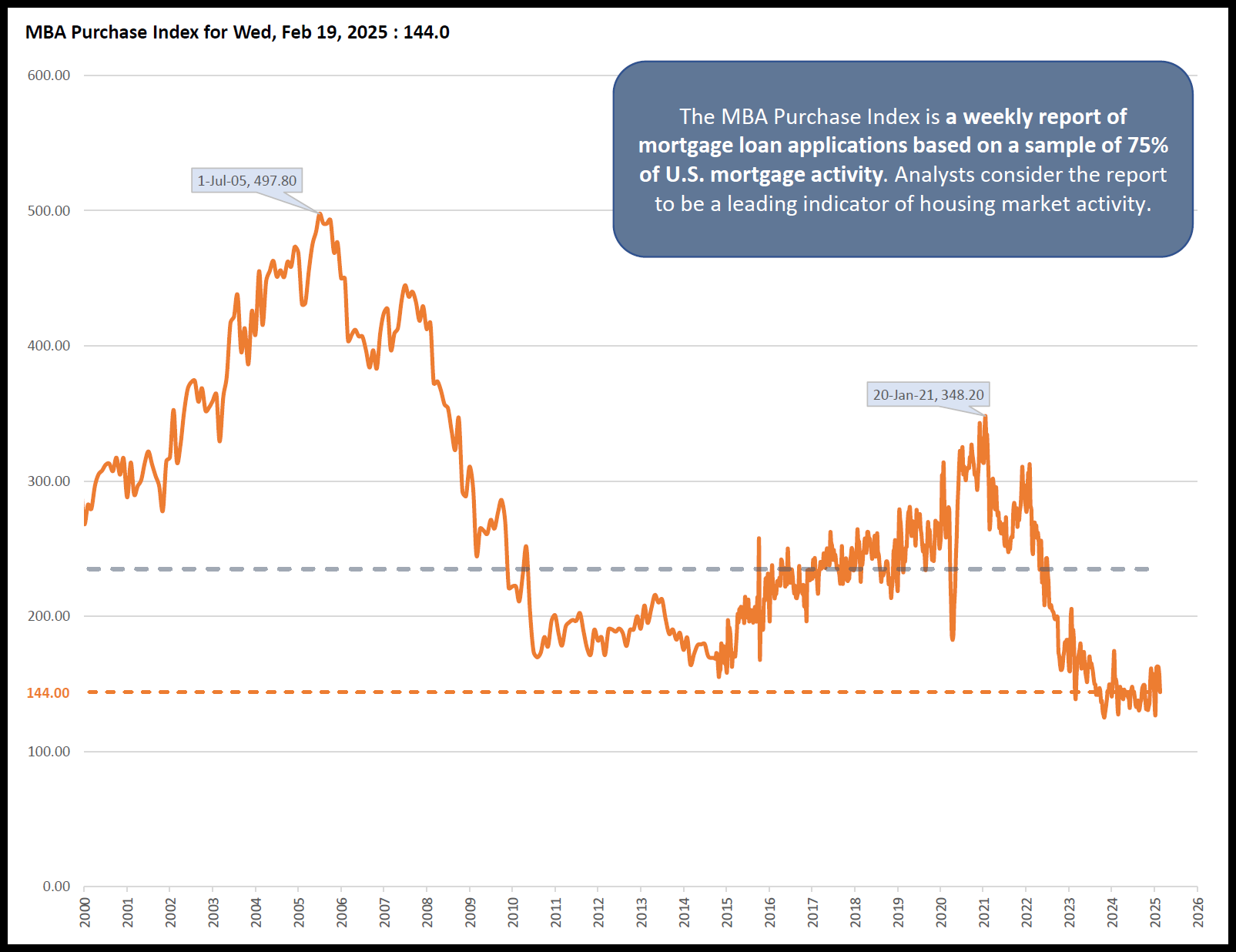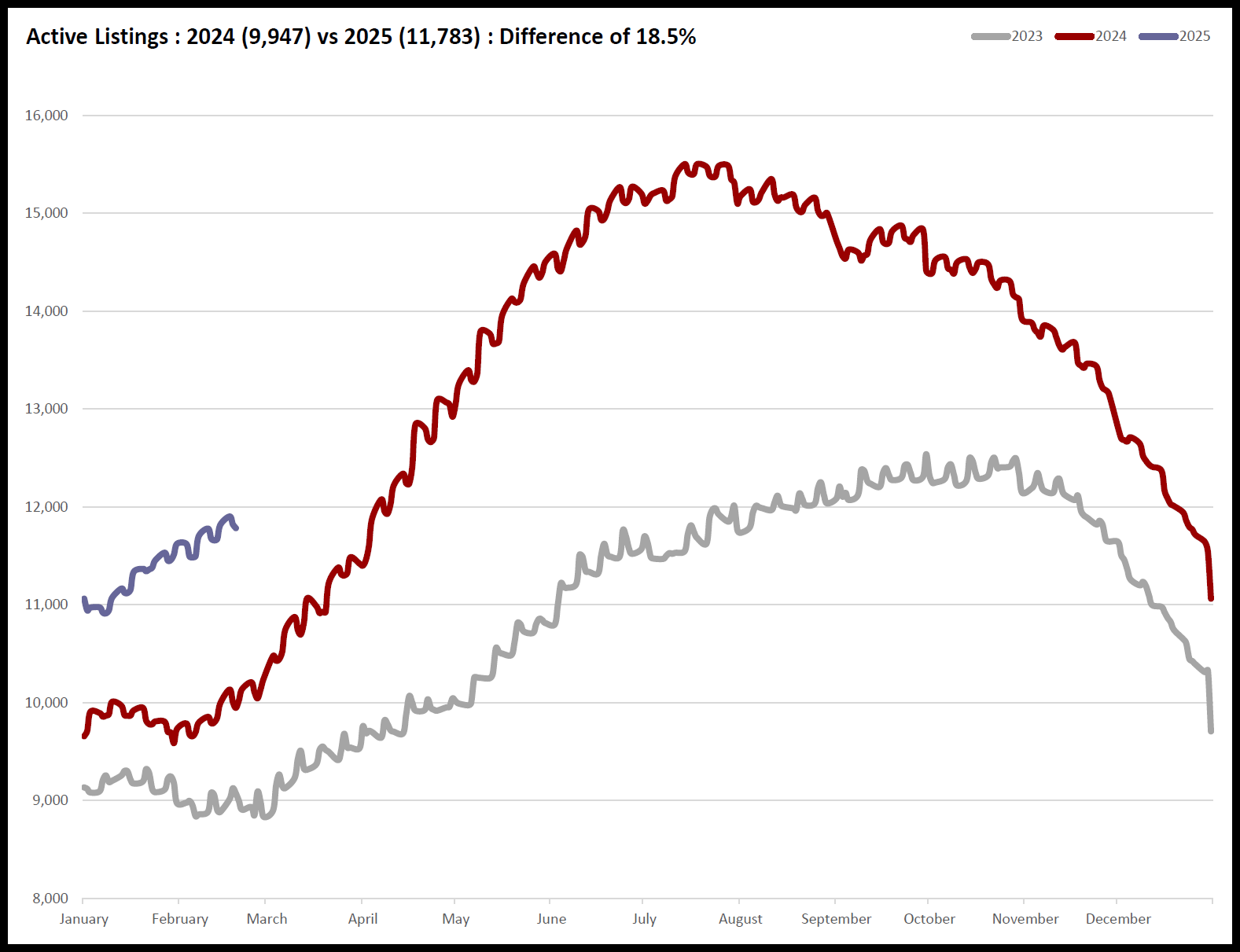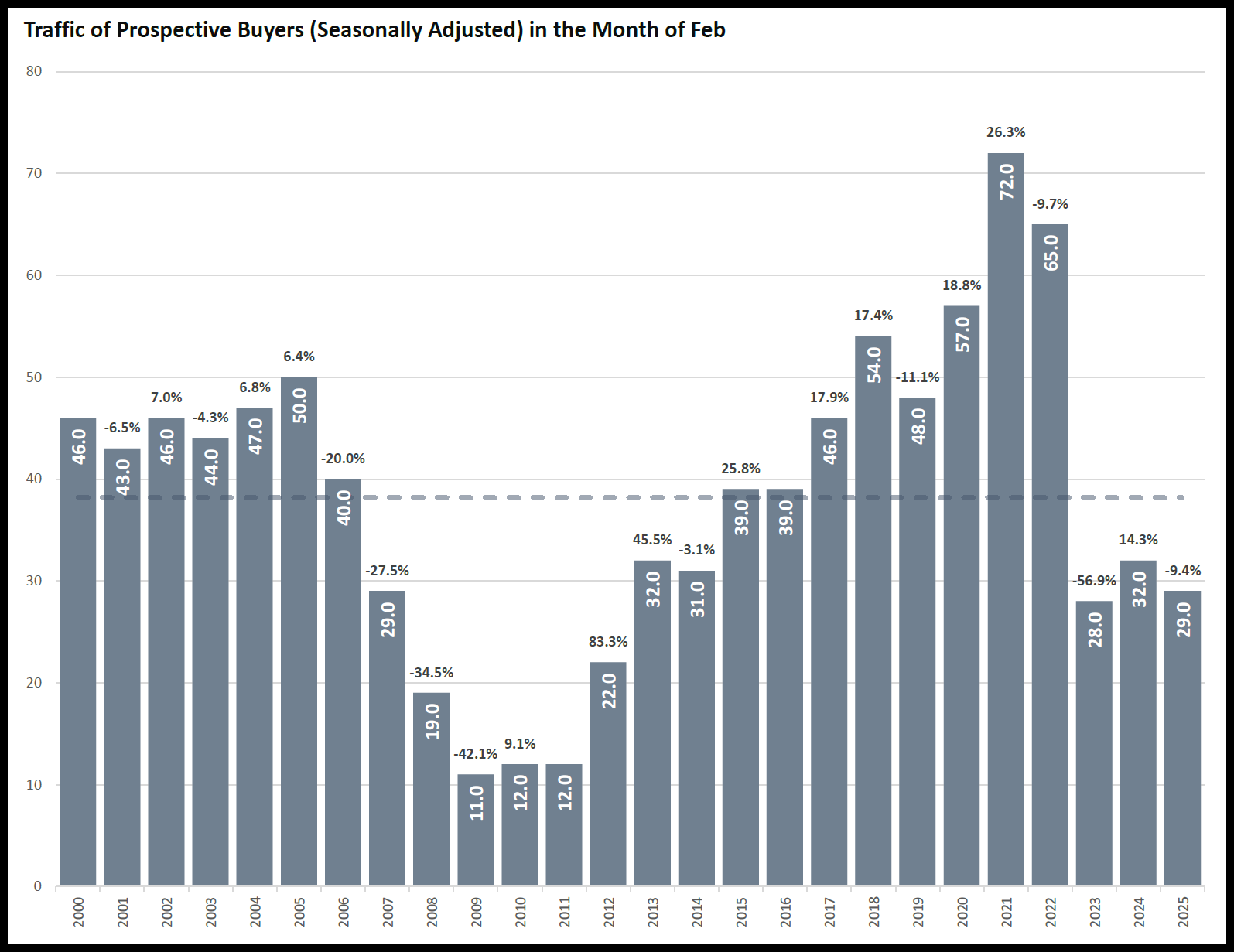How the MBA Purchase Index is Reshaping Austin’s Housing Market
Published | Posted by Dan Price
The MBA Purchase Index and Its Impact on Austin Area Real Estate
The Mortgage Bankers Association (MBA) Purchase Index is a crucial leading indicator of housing market activity, measuring the volume of mortgage loan applications for home purchases. As one of the most reliable predictors of future home sales, its fluctuations provide valuable insight into market trends. The latest data shows that the Purchase Index for February 19, 2025, stands at 144.0, significantly below the historical average of 235.01. This suggests a slower pace of mortgage applications, reflecting broader affordability challenges in the housing market.

Recent data from the MBA Purchase Index indicates shifts in homebuyer demand, directly influencing the Austin housing market. With a recent decline in the index due to higher mortgage rates, Austin has seen a corresponding slowdown in pending home sales. According to the latest 30-Year Fixed Mortgage Rate report, interest rates have remained above 7%, which has impacted affordability and reduced the number of active buyers in the market. As a result, Austin’s residential inventory has increased by 17.6% year-over-year, with active listings rising from 11,162 in February 2024 to 12,079 in February 2025.

While higher mortgage rates have limited affordability, recent fluctuations in the MBA Purchase Index suggest that buyers are adjusting their expectations. A slight stabilization in rates has allowed some buyers to re-enter the market, particularly in areas where pricing has adjusted downward. However, demand remains subdued compared to peak levels seen in prior years, reflecting an ongoing transition from a seller’s market to a more balanced environment. The Market Cycle report suggests that Austin is currently experiencing a neutral to slightly buyer-favorable market, where listings remain active for longer periods, and sellers are increasingly willing to negotiate on price.
The shift in market dynamics is evident in buyer behavior. The Traffic of Prospective Buyers Index for February 2025 shows that open house attendance and mortgage pre-approvals have declined, suggesting that many potential buyers are delaying home purchases until economic conditions improve. Despite this, Austin remains a desirable market due to its strong employment growth and continued in-migration, which provides long-term stability even in slower housing cycles.

The interplay between the MBA Purchase Index, mortgage rates, and inventory levels will continue to shape Austin’s housing market. If mortgage rates decline in the latter half of 2025, the Purchase Index could see a stronger rebound, leading to increased buyer activity and market stabilization. In the meantime, real estate professionals and buyers must navigate a market where affordability and interest rates remain key determinants of housing demand.
FAQ Section
1. What is the MBA Purchase Index, and why does it matter? The MBA Purchase Index measures mortgage loan applications for home purchases. It serves as a leading indicator of housing market activity, helping to predict future home sales volume. A declining index suggests weakening demand, often due to rising mortgage rates or affordability issues.
2. How are rising mortgage rates affecting the Austin housing market? With mortgage rates hovering above 7%, Austin homebuyers have seen their purchasing power shrink, leading to a 17.6% increase in housing inventory as demand slows. Higher rates have also discouraged refinancing, keeping many homeowners in their existing homes.
3. Will Austin’s housing market recover in 2025? If mortgage rates decline later in 2025, Austin could see renewed buyer activity. However, affordability concerns and economic conditions will play a key role. The MBA Purchase Index trends will provide early indicators of when the market may stabilize.
Request Info
Have a question about this article or want to learn more?


